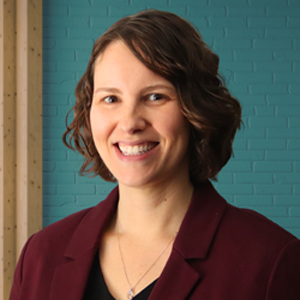A small piece of Toronto has a familiar new name. A laneway in the St. Clair West and Bathurst area is now officially known as Bishop Arthur Brown Lane, thanks to the initiative of several local Anglicans.
Evelyn and Robert Longworth, long-time members of St. Michael and All Angels, Toronto, first heard about the project from Didi Erb, the wife of the late Rev. Canon John Erb, a former incumbent. “She said she was part of a group getting various lanes named in Toronto,” says Mrs. Longworth. “She suggested Bishop Brown, and I thought that was perfect.”
Bishop Arthur Brown was the incumbent at St. Michael’s from 1963 to 1981, when he was consecrated suffragan bishop of Toronto. “We were the first couple he married there, 51 years ago,” says Mrs. Longworth. Mr. Longworth was also one of Bishop Brown’s churchwardens in the 1970s.
After hearing about the project, the Longworths learned that city councillor Joe Mihevc was asking Ward 21 residents to submit names that capture the spirit of the ward. “He encouraged people to submit names from various times and places in the community,” says Mrs. Longworth.
Ten lanes in Ward 21 are being named in 2016, with another 10 to follow next year. The project is intended both to commemorate local history and to help first responders and city services navigate the streets.
As part of their submission, the Longworths sent letters to everyone whose home backs onto the lane, which starts on Wychwood Avenue just opposite St. Michael’s and continues west almost to Christie Street. “I must have printed about 50 or 60 letters. Nobody complained,” says Mrs. Longworth.
In fact, she received several letters of support from neighbours. “One was from a woman who said she didn’t go to the church, but she knew how involved he had been in the community,” she says.
Bishop Brown, his wife Norma and their three daughters lived in the rectory next door to St. Michael’s and were active members of the neighbourhood. “He wasn’t just a minister at the church; he got involved more than someone who just showed up on Sunday morning. I think it was because he had children in the community,” says Mrs. Longworth.
Perhaps his most lasting legacy in the area is the St. Michael and All Angels Day Care Centre, founded in 1976 and still flourishing today. “The daycare was founded because there was nothing available for kids over two years old at that time,” says Mr. Longworth. “There was a private daycare in the church, but once the kids turned two and a half, they all had to go to different places.”
After he left St. Michael’s, Bishop Brown continued to provide advice and financial support to the daycare until his death in 2011. One of his daughters, Carrie Brown, was the centre’s longest-serving supervisor.
The Longworths also want to recognize Bishop Brown’s advocacy around race relations and multiculturalism, something he is still known for across the diocese. “He was very active in promoting the West Indian community, and he had a strong sense of the of the civil rights movement in the States,” says Mr. Longworth. Bishop Brown invited many dignitaries to St. Michael’s over the years, welcoming guests such as Premier Bill Davis and Archbishop Desmond Tutu.
That welcome was also extended to newcomers from around the world, whom he invited to take on leadership roles in the church. “He appointed our first black warden and one of the first female wardens probably in the diocese,” says Mr. Longworth. “St. Michael’s became a socially active church largely because of him.”
A ceremony to celebrate the new name took place on April 29, with remarks, songs and an official unveiling of the sign. Joanne Brown, Bishop Brown’s daughter, the Very Rev. Duncan Abraham, dean emeritus of St. James Cathedral, and Councillor Mihevc attended.



The time to act is now